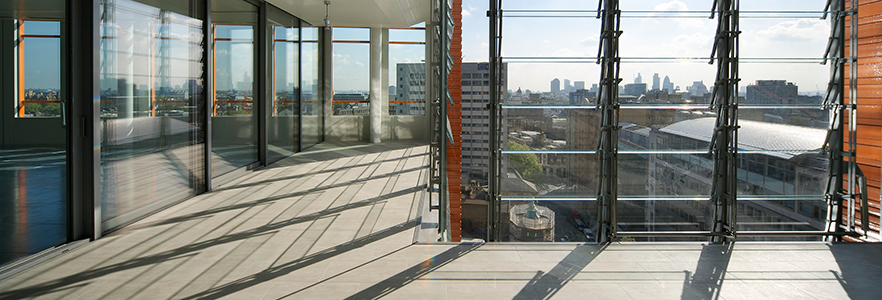Embracing daylight is critical to sustainable urban development. In our increasingly urbanised world, planning regulations and tools should be reviewed to put daylight back at the heart of our cities.

Daylight is vital to our health and well-being. And making more use of daylight in place of artificial lighting can help reduce energy consumption. These are just two reasons why prioritising daylight in cities is an issue for developers, architects, politicians and society as a whole to give serious consideration to.
Designers and engineers have a range of tools at their disposal to help them with daylighting design. Advanced 3D computer simulations and rendering tools, incorporating statistical weather data, allow the designers and engineers to predict and visualise daylight at an early stage in their designs. (Watch a time-lapse film of daylight modelling at Sacramento Airport). Taking high dynamic range (HDR) photos of existing projects showing the luminance distribution in a space, enables designers to give clients an impression of what daylight quality they can expect to experience inside their space when it’s complete.
[infobox]Making more use of daylight in place of artificial lighting can help reduce energy consumption.[/infobox]But there’s more to be done. Up until around the 1980s, architecture students were encouraged to develop an instinct for daylight and its qualities in different parts of the world. Today, this part of their education has been neglected. The complex and crammed curricula of modern architectural education leave students lacking the necessary opportunity to observe, imagine and embrace daylight experience at the beginning of every design.
From our partners:
Despite this, an architect might intrinsically understand the value of daylight for well-being. The bigger challenge is convincing developers. Designers, need to demonstrate the added-value daylight brings: maximising lettable floor space within development boundaries through an interactive process of design and optimisation, while still meeting all the requirements for urban planning for daylight, for example.
Daylight can also be shown to be a commodity. Bioreactive facades and photovoltaic panels generate energy from daylight. As these technologies are more widely incorporated into modern building design, the availability of daylight in our cities will acquire a completely new significance.
Some cities are making progress on prioritising daylight in planning regulations. The UK has long had the Rights to Light easement and principle, which prevents new buildings from taking daylight away from existing neighbours. But until recently, it has been possible to pay a neighbour compensation to circumvent this right. A consultation review by the Law Commission on this practice is currently ongoing and this may be a good opportunity to modernise the planning regulations upon its outcome.
And in densely developed Hong Kong, daylight has long held a commercial value. Offices and apartments that receive a lot of daylight have a higher value and are easier to sell. As a result, Hong Kong has very detailed planning guidelines that stipulate requirements such as the distance between buildings.
Given its importance to all our lives and well-being, ensuring our homes and places of work have access to adequate daylight is a mainstream issue. Daylight must be considered in the earliest design phases of any building development and enshrined in the regulations that shape our cities.
This article originally appeared in Arup.















